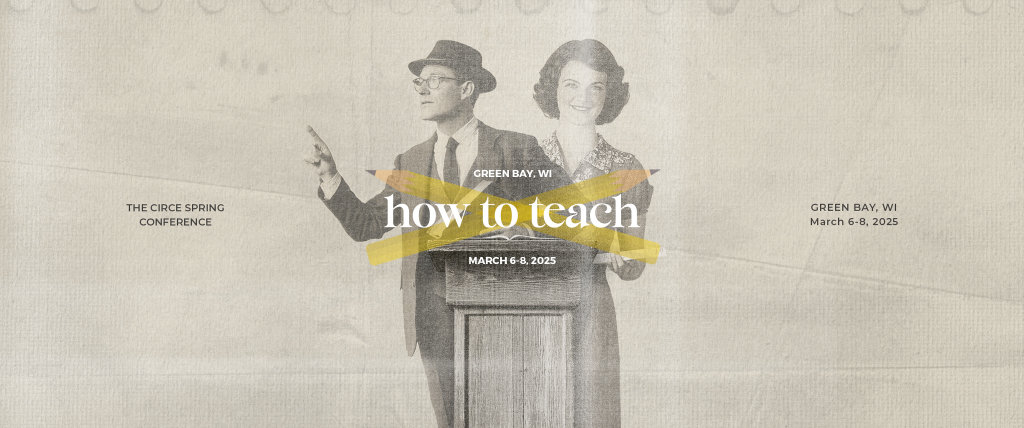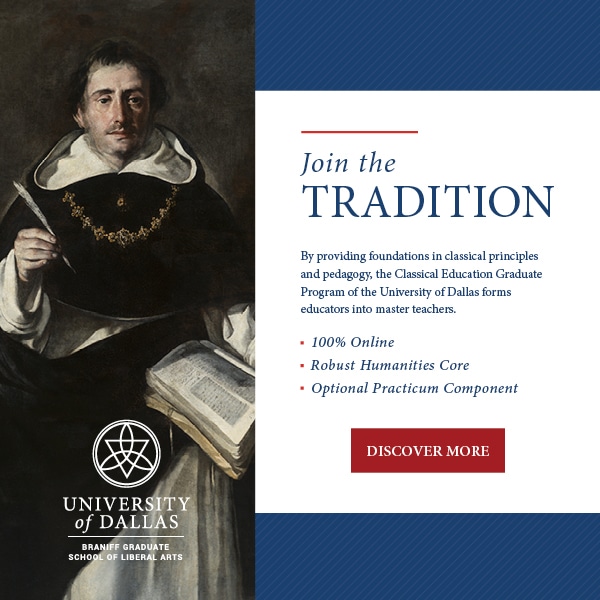Teaching Shakespeare To Children
This guest post was written by Cindy Rollins.
—
What do you think of when you hear the name Shakespeare?
A surprising number of people have fiercely negative reactions, perhaps thinking of their bohemian English teacher sweeping across the room quoting the tragic Ophelia, “”There’s rosemary, that’s for remembrance.” What possible benefit could a modern student derive from that nonsense? Or maybe you are among the few people left who realize there is some value in reading Shakespeare but between your own confusion and your student’s despair you can never quite pull it off. Or maybe you are intimidated by the teacher down the hall or the mom next door, dressing in Elizabethan clothes with a whole van full of internet sites and handouts ready to tackle the Bard. Who has the time?
Is Shakespeare nonsense? Is he too confusing for our students to understand? Does teaching Shakespeare require a degree in English Literature and a lot of expensive resources? Those are the questions.
For purely utilitarian reasons we could screw our courage to the sticking place. Knowledge of Shakespeare comes in handy. His plays are almost as good as Latin for increasing vocabulary, having added or recorded for the first time over 2000 words to the English lexicon-words including accommodation, apostrophe, assassination, dexterously, dislocate, frugal, indistinguishable, misanthrope, obscene, pedant, premeditated, reliance, and submerged.
He also coined such sayings as: “Teeth set on edge”, “give the Devil his due”, “budge an inch” ,“green-eyed monster”, “cold comfort”, “fair play”, and “stood on ceremony”. Whether you have read any of Shakespeare’s plays or not there is a good chance you quoted him today. After all he is so cliché.
Christians might content themselves with the idea that he makes over 1000 Biblical references in the plays. (Cain and Abel alone referenced more than 25 times.) Many of the biblical allusions in the plays seem almost breathed out of the heart of William Shakespeare which gives us hope that the man was perhaps a Christian.
My own college boys tell me they are thankful that they can allude to passages from the plays in their college papers and class discussions. It gives them brownie points with professors. Even modern professors are bound to be impressed when you understand that the title of William Faulkner’s The Sound and the Fury refers to Macbeth.
Being familiar with quotes, plots and storylines from Shakespeare can give our students a cultural edge, a lifeline of connections, a key to knowledge unequaled by any other English author. Utilitarian purposes abound, but we need hardly stop there when we have a much better reason within our grasp.
Charlotte Mason says,” To become intimate with Shakespeare in this way is a great enrichment of mind and instruction of conscience. Then, by degrees, as we go on reading this world – teacher, lines of insight and beauty take possession of us, and unconsciously mould our judgments of men and things and of the great issues of life.” (Charlotte Mason, Ourselves, Book 2, page 72)
There’s the rub: the instruction of conscience and the molding of our judgments- truth, beauty and yes, goodness, all within the canon of the plays of William Shakespeare.
Many years ago, after being inspired by the schools depicted in Susan Schaeffer Macaulay’s For the Children Sake-English cottage schools based on the ideas of Charlotte Mason- I desired to begin reading the plays to my own children. Macaulay described her own young daughters’ experiences reading Shakespeare at a small London school:
“Shakespeare became a friend whose writing was much loved. The children would argue about the actual characters; for instance, whether Hermione was right or wrong, and what the old shepherd was actually up to (they were enjoying The Winter’s Tale). The children read, every Friday, part of a Shakespeare play, each taking a different part. This from age nine! Once a year they would act one of the plays in the garden. In this way, they would enjoy three Shakespeare plays a year. “
As inspiring as that one little paragraph was, year after year went by and my own fear and intimidation kept me from starting what seemed a major project complicated by my own ignorance.
One summers day, in a moment of sheer hope, I picked up A Midsummer Nights Dream, gathered the children around, teenager to baby, and began reading Act I, Scene I. We read one scene a day. By reading a tiny bit each day we were able to stop periodically and try to figure out what was going on. We discussed words and meanings and intonations, but for the most part we just read the play. What really sealed the deal was, during the last scene when Bottom and the craftsmen perform the play of Pyramus and Thisbe, the children laughed. Belly laughs. We never looked back.
One of my own philosophies of teaching is to keep it simple. I have found that the more complicated my lesson plans the less likely they are to happen. The Play’s the thing that will win the hearts of our students not the lesson plan.
My general procedure for reading Shakespeare is to read aloud a synopsis of the play from either Lamb’s Tales from Shakespeare or Edith Nesbit’s Beautiful Stories from Shakespeare. We then read the play, scene by scene, one scene a day or less. I usually just read all the parts stopping to discuss as needed. Every once in a while I have had different children read different parts but that works better with plays we already know well. It would also work well with older students. One year we performed an abridged version of The Merchant of Venice with other families after reading the play in its entirety. This was a huge success. Finding a quality abridgement (using the original lines not just the story lines of the play) for classroom performances may create great memories for your students. The goal with Shakespeare as with the Bible is to move the student away from abridgements and into the real thing as young as possible. In family setting this is quite natural but I would say that 10 year old students can begin to understand the real plays with careful selection and short readings.
We also try to memorize some piece from the play we are working on. Some of our favorites: The St Crispin Day’s Speech from Henry V: “We few, we happy few, we band of brothers…” and Portia’s lovely sonnet from The Merchant of Venice: “The quality of mercy is not strained.”
We watch a video production of the play or even two different productions (one before our reading and one after). The videos have been hit and miss ranging from the glorious Richard Burton as Petruchio to the dreadfully realistic King Lear which shows a hobbit without clothes or eyes. I tried the idea, one year, of just watching the plays and not reading them out loud but I found the plays did not work their way into our mortal coil without the readings.
My children have not all been enthusiastic Shakespeareans. They often groan and question why we read some of the plays but there is a method to my madness. I always tell new students of the Bard that if they do not like Shakespeare that is fine but it is the height of ignorance to conclude that it is the Bard’s fault rather than something lacking within themselves. Harsh, I know.
In the last couple of years I have collected one resource that has greatly helped my understanding of the plays: Asimov’s Guide to Shakespeare in Two Volumes. If I read through this book a little ahead of our readings, I can add interesting historical remarks such as who Hotspur was or what it meant that Julius Caesar crossed the Rubicon. After a really confusing day’s reading I can pull out Asimov and straighten myself out. It is pricey because it is out of print, but I highly recommend it if you plan to discuss the plays with your students. Another book which is more useful for the teacher than the student is Arthur Quinn’s Figures of Speech which will aid you in pointing out various schemes and tropes in a natural manner as you read.
True, my own love of Shakespeare aids me in persevering year after year but even with that love I had a hard time getting the horse out of the gate in those early years as my oldest son was almost past his salad days. But it turns out that reading Shakespeare is not so hard after all. It is already divided up into small chunks. All you need is a few minutes each day and before you know it your children will be all grown up and you will regularly be making jokes with phrases like “get thee to a nunnery.”
The beauty of building a family or classroom culture around Shakespeare is that it is something that can still be shared with a wide, though shrinking, host of other people. It is lighting a small candle in the darkness of cultural decay and looking out to see other candles twinkling all around.
(This article contains at least 10 Shakespearean references. Can you find them?)












